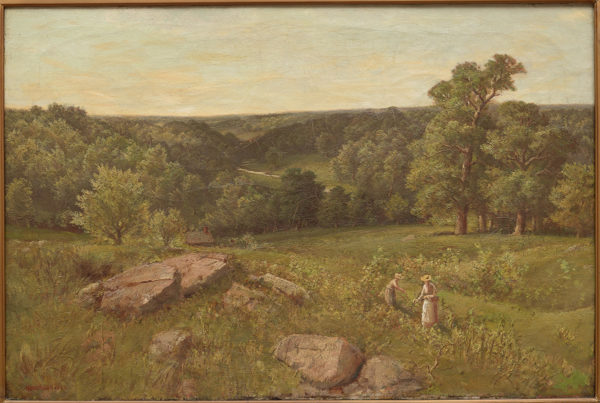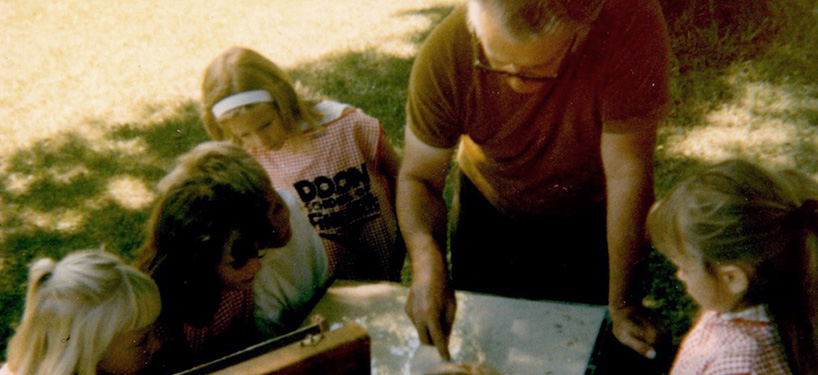Though people don’t tend to be the focus of most of Homer Watson’s paintings, small figures are still found within his landscapes. They often depict the relationship between people and nature– such as these two berry pickers in the Grand River valley.

c.1884, Oil on Board. HWHG Permanent Collection.
Berry picking around the Grand River has a long history, likely going back much further than the first known recorded human settlements in the 1500s by the Neutral Nation.1 Not just a source of food, berries continue to hold important cultural and medicinal significance to indigenous people throughout Canada.
Additionally, berry-picking has also become a leisure activity and social pastime – both today and in the past too. Homer didn’t just paint berry-pickers, but his family enjoyed getting out and doing it themselves. In a letter to Homer, his sister Phoebe notes that raspberry picking while camping along the Grand was a memorable part of her trip.

We went berry picking too and had raspberries and cream. We got all our milk, eggs, butter, and such things from farmers across the river. We had a boat and would go across it in that before we got that we would wade the river.
Letter from Phoebe Watson to Homer and Roxa Watson, July 30th 1889, Homer Watson fonds, National Gallery of Canada Library and Archives.

Other types of berries found in our region include chokecherries, mulberries, and woodland strawberries. Always remember, however, that picking wild berries can be disruptive to the natural ecology of an area2 and eating ones you can’t identify can be dangerous!
As we move further into spring and closer to the summer, there will be plenty of opportunities to get out to the Grand River trails – check out how many kinds of wild berries and native plants you can recognize, sketch, or study is great way to explore our natural environment.



